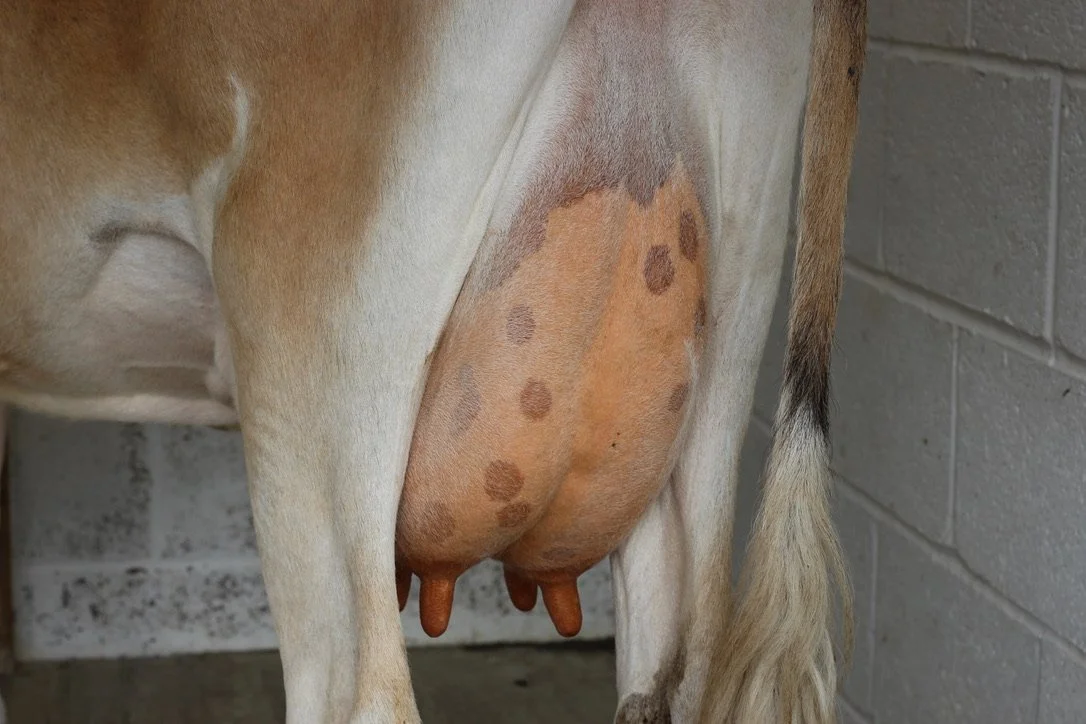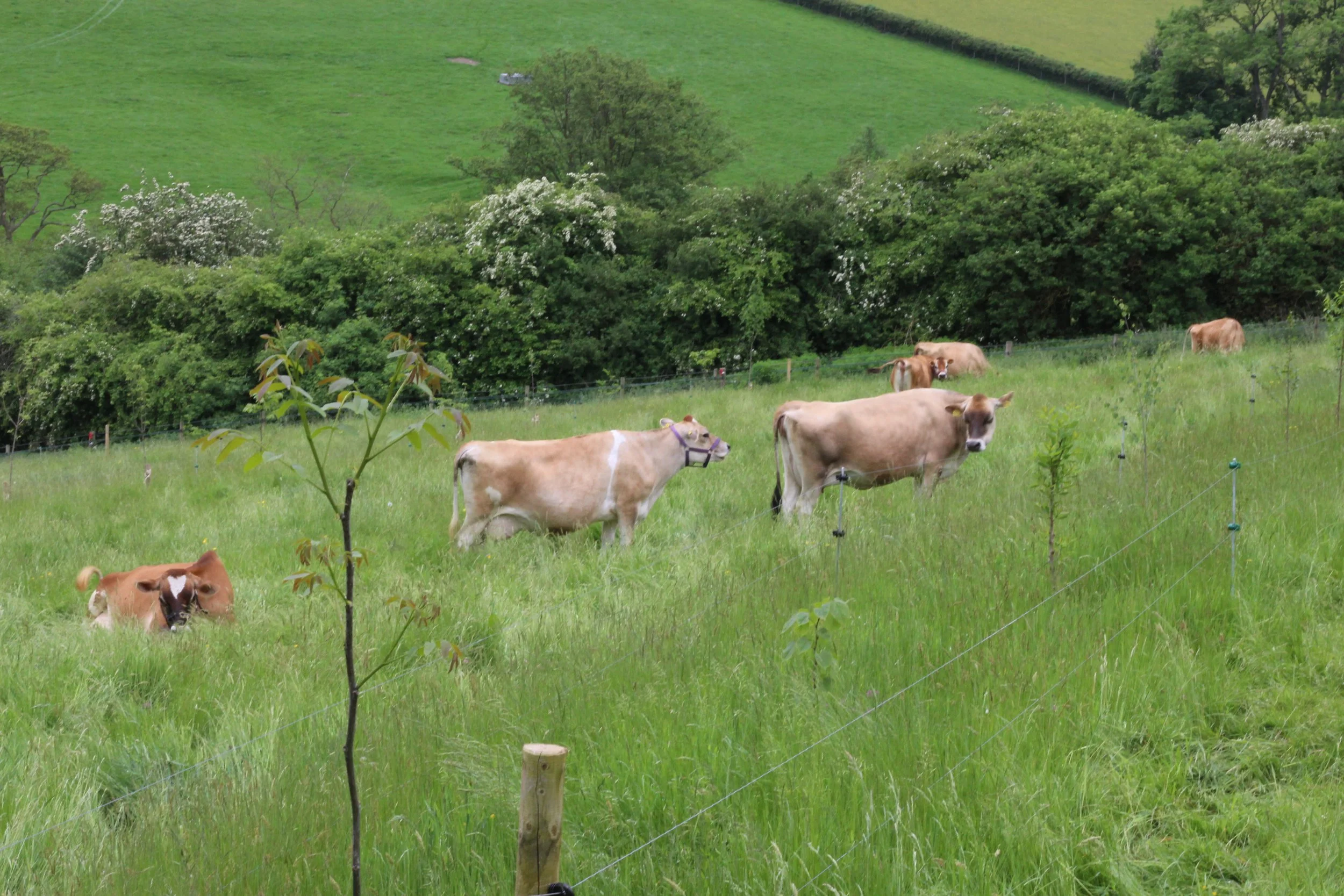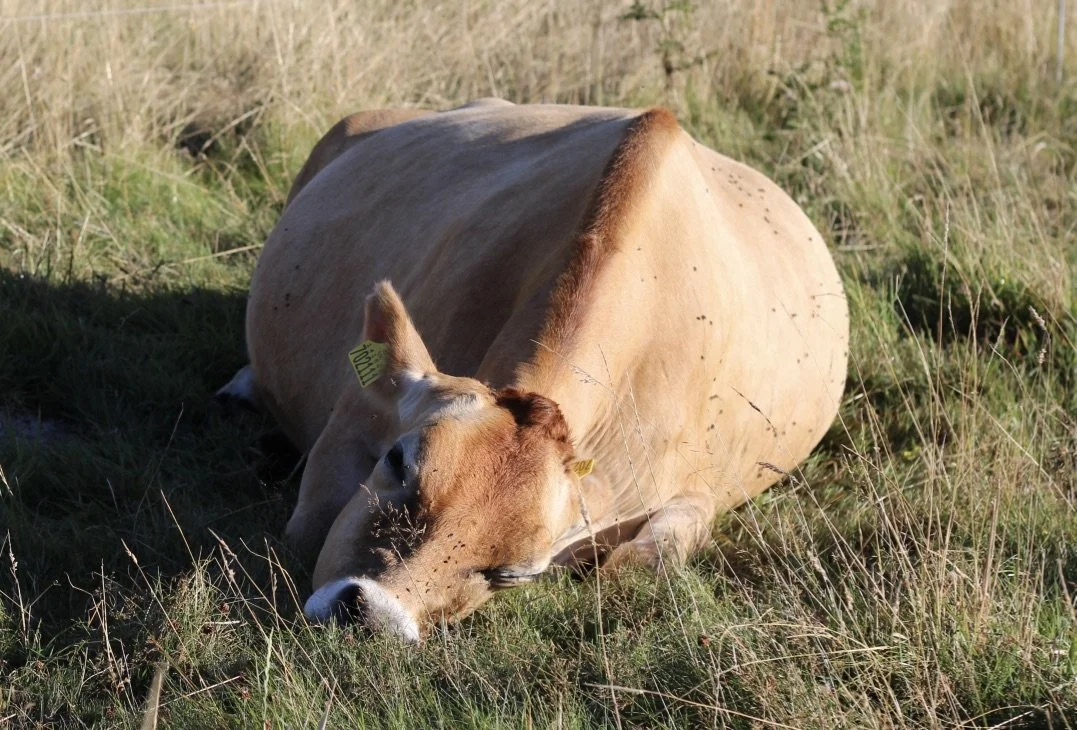House Cow Health
The key to good health in a house cow is to keep her content and nutritionally replete. However, having an understanding of what can go wrong will help both prevention and cure.
There are two main areas of concern for health in dairy cows: mastitis and metabolic conditions. The metabolic conditions are milk fever, grass tetany and ketosis.
Why do dairy cows suffer more from these health issues than beef cows? The answer is simple, a dairy cow has been selectively bred to grow mammary glands that are disproportionately large compared to her body size. She is a high-performance animal, the thoroughbred of the bovine world, her udder is the focus of that performance and her metabolism takes the strain of supporting her milk production.
Consider that the average weight of a cow in a commercial dairy is around 600kg and she will produce on average a little under 30 litres of milk per day, of which around 10% or 3kg will be milk solids (fats, proteins, lactose and micro-nutrients). This means that each year, over a 300-day lactation, a dairy cow will metabolise and secrete via her udder one and a half times her body weight in milk solids, and grow a calf inside her, and look after her own body maintenance, and she does this year after year! This incredible feat puts enormous pressure on the physiology of the dairy cow.
This is relevant for the house cow keeper, for although yields will likely be half that of a commercial dairy cow, they will likely be twice that of a beef cow and still place considerable burden on the cow. Thus, our beloved bovine thoroughbreds can easily be tipped out of balance and this will often present as problems in the areas under the greatest pressure with mastitis and metabolic disorders being the most common ailments.
MASTITIS
Mastitis is inflammation of the udder. It usually presents initially with a change in the consistency of the milk which can become watery, may take on a greyish or bluish hue, and have clots or strings of clotted fibres. The milk can also get a salty taste. This may progress to be accompanied by heat and swelling in the affected quarter which will cause pain and a reluctance to be touched or milked.
The udder takes the strain in a dairy cow
Whilst a bacterial infection is commonly cited as the main cause of mastitis, this is really only a small part of the story. For those wishing to keep their cows healthy naturally, then a broader understanding of illness and susceptibility to disease is needed.
Life is a story of death, degradation and rebirth, and bacteria are the main decomposition cogs that turn the lifecycle wheel. They are necessarily ubiquitous in the environment, both within and on every living (and non-living) thing on the planet, and take many forms, so that as flora and fauna or just individual cells within or on us die, bacteria are there to perform their essential symbiotic decomposition function in the lifecycle process.
Cows are carrying quadrillions of them in their rumen, and soil, water and air are full of them. There would be no life without bacteria to recycle waste and biodegrade toxins. Some of the bacteria associated with infection in cattle or causing illness in humans, are those that are specialised in decomposing toxic waste and man-made environmental pollutants. They multiply and thrive where these pollutants are present, and it is the by-products of their metabolisation and detoxification of poisons that can cause illness or inflammation in the udder of a cow.
Thus, when looking at mastitis prevention, the first area to consider is to ensure that cows are not exposed to any form of toxin. The key ones to be aware of are the residues found in feed that is produced with chemical fertilisers or herbicides, pesticides and other poisons. This means keeping pastures free from these substances and if choosing to feed concentrates, then only buying organic feed.
Chemical anthelmintics (wormers) and pour-on fly sprays are also poisons designed to kill gut worms or fly larvae. However, when passed through the cow the residues in the dung damage soil health by also killing essential soil microbes as well as dung beetles and other invertebrates necessary for the decomposition process(1). This creates a toxic environment both in the gut of the cow and in the soil that will trigger the proliferation of the necessary detoxification bacteria which can then contaminate her udder, and trigger mastitis.
PREVENTION
Prevention, therefore, should be to break parasite lifecycles by rotationally grazing cattle, using holistic planned grazing, and negate the need to worm them. And to keep them nutritionally replete on diverse pastures with hedgerows and trees to browse, so that their vibrant health makes them unattractive to flies and makes pour-ons redundant.
The third key area of prevention is leading a stress-free life. All the time a cow is at ease, is nutritionally replete and not exposed to toxins she will remain healthy and will have almost no susceptibility to illness. However, any stressor will display in the area under most strain, which, as mentioned above, for a dairy cow is her udder or metabolism. Emotional stress is often overlooked as a major trigger for mastitis.
Provide shelter and shade for cow comfort
Just as with us, emotional upset can cause physical illness: being kept by someone who does not understand her or meet her needs; being bullied by other cows and not being able to feed or lay down in a relaxed way; being left exposed and unable to find shelter in extreme weather conditions. These are all examples of stresses that can trigger mastitis and need to be considered in an animal health plan.
For a cow that has succumbed to mastitis the first immediate step is to consider the trigger and change or remove it, whilst also assessing the severity of the condition and whether a vet is needed. While in experienced hands most udder inflammation can be successfully and rapidly healed using herbs or homeopathy, regular stripping of the affected quarter and lots of kind words to reassure the cow, for the inexperienced it would be wise to take the guidance of a vet, ideally one with an open mind to holistic approaches.
METABOLIC DISORDERS
Metabolic disorders relate to the physiology of the cow and her ability, or not, to maintain homeostatis within her key bodily functions.
Milk fever and grass tetany are two sides of the mineral imbalance coin. Plants obtain minerals via symbiotic relationships with soil bacteria and in healthy, well-managed pastures (where no toxic chemicals or inorganic fertilisers have been used) they are able to access the key minerals: calcium, magnesium, phosphorus, sodium and potassium, along with cobalt, copper and selenium, in the correct ratios to each other.
Holistic planned grazing in a silvo pastoral system maximises mineral availability
Cows grazing these pastures, and where there is also a diversity of species, will have access to these minerals in the ratio needed to maintain mineral homeostatis. However, mineral uptake is inhibited if ingested in the wrong ratio. For example, where plants are growing in unhealthy soils, where growth has been forced using chemical fertilisers, or medications passing through the cow have damaged soil life, or there is a lack of diversity in the pastures.
MILK FEVER
Milk fever is a classic example of inability to maintain mineral homeostatis and for susceptible (high yielding, stressed or inappropriately fed) cows from 5yo upwards. It is most commonly experienced soon after calving when the cow is unable to metabolise sufficient calcium from her body stores (primarily her bones) to support the early demands of milk production. Without sufficient calcium she is unable to maintain muscle function, her rumen will shut down, her temperature will drop, she will start to shake as her leg muscles start to fail, and she will collapse.
Milk fever is serious and a cow can go into a coma and die quickly, yet it is also very easy to treat. All owners of a pure dairy breed house cow should have a couple of bottles of Calcijet (a solution of calcium and magnesium), a flutter valve and large bore needle in their first aid kit. And should ensure they have their vet show them how to administer it subcutaneously. It is so easy to do and could save the life of the cow if the vet is delayed in coming in an emergency.
Browsing hedgerows and trees provides more minerals
Prevention of milk fever is primarily ensuring cows are grazing the aforementioned diverse pastures where they can access minerals in the correct ratio, but also ensuring that in the last 2-3 weeks of pregnancy they are given no mineral supplementation or concentrated feed of any sort and ideally grazing more mature pastures containing tall grasses or balancing younger growth with ad lib hay.
GRASS TETANY
Grass tetany, sometimes called ‘staggers’, is very similar to milk fever but is the lack of magnesium rather than calcium that is the trigger. Affected cows do literally stagger as they lose effective control of their muscles. This is also an emergency situation that requires a vet.
Grass tetany is caused by cattle eating lush growth in pastures containing poor species diversity and often boosted with inorganic fertilisers which leads to low magnesium in the pasture and/or high potassium, which inhibits magnesium uptake.
Just as with milk fever, prevention is grazing, ideally holistically, diverse pastures containing species that mature at different times so there are always older grasses in the stand.
KETOSIS
Ketosis is the third of the key metabolic disorders that can afflict susceptible dairy cows. Ketosis is most likely in the first two months of lactation as milk production increases and the cow has the most difficulty meeting her energy needs and may go into negative energy balance. When this happens she will make up the difference by metabolising her body fat stores, commonly referred to as ‘milking off her back’, which is where the fat loss is most visible.
Fat cows are more susceptible to ketosis
Whilst it is normal in early lactation for fat stores to be used to some extent to meet energy demands, if that utilisation is too high then ketones are produced in volumes greater than the cow can use them and ketosis results. Overly fat cows have more difficulty metabolising fat stores and utilising ketones and are, thus, more prone to ketosis.
The main symptoms to look out for are an acetone (pearl drops) smell of her breath, reduced milk yield and loss of appetite. This is also a situation where the guidance of a vet is advised. Although it is not a case of “I need a vet now” as in milk fever or grass tetany, it is still a case of “I need a vet today or tomorrow at the latest” because if not caught early it can lead to secondary ketosis, which is often fatal.
The common thread to maintaining vibrant house cow health, and the best prevention of illness of any sort, is to keep her content and nutritionally replete on diverse pastures, grazed holistically, and free from toxic substances, particularly the man-made sort.
REFERENCES
(1) Toxicity of ivermectin residues https://research-information.bris.ac.uk/en/publications/toxicity-of-ivermectin-residues-in-aged-farmyard-manure-to-terres






